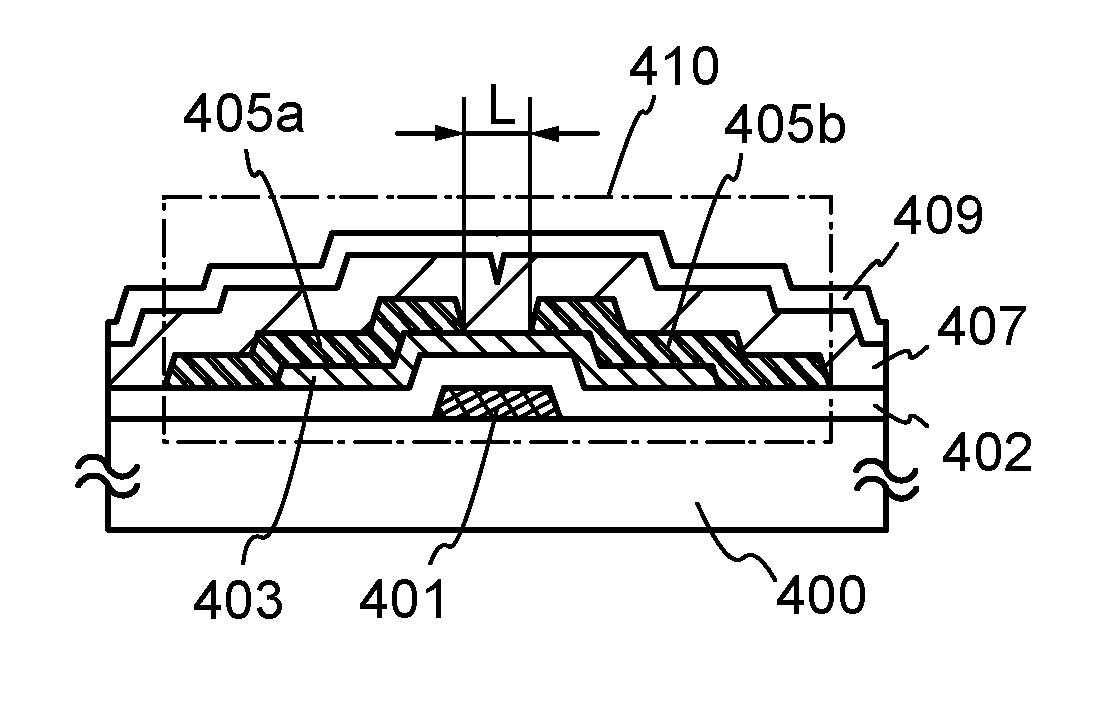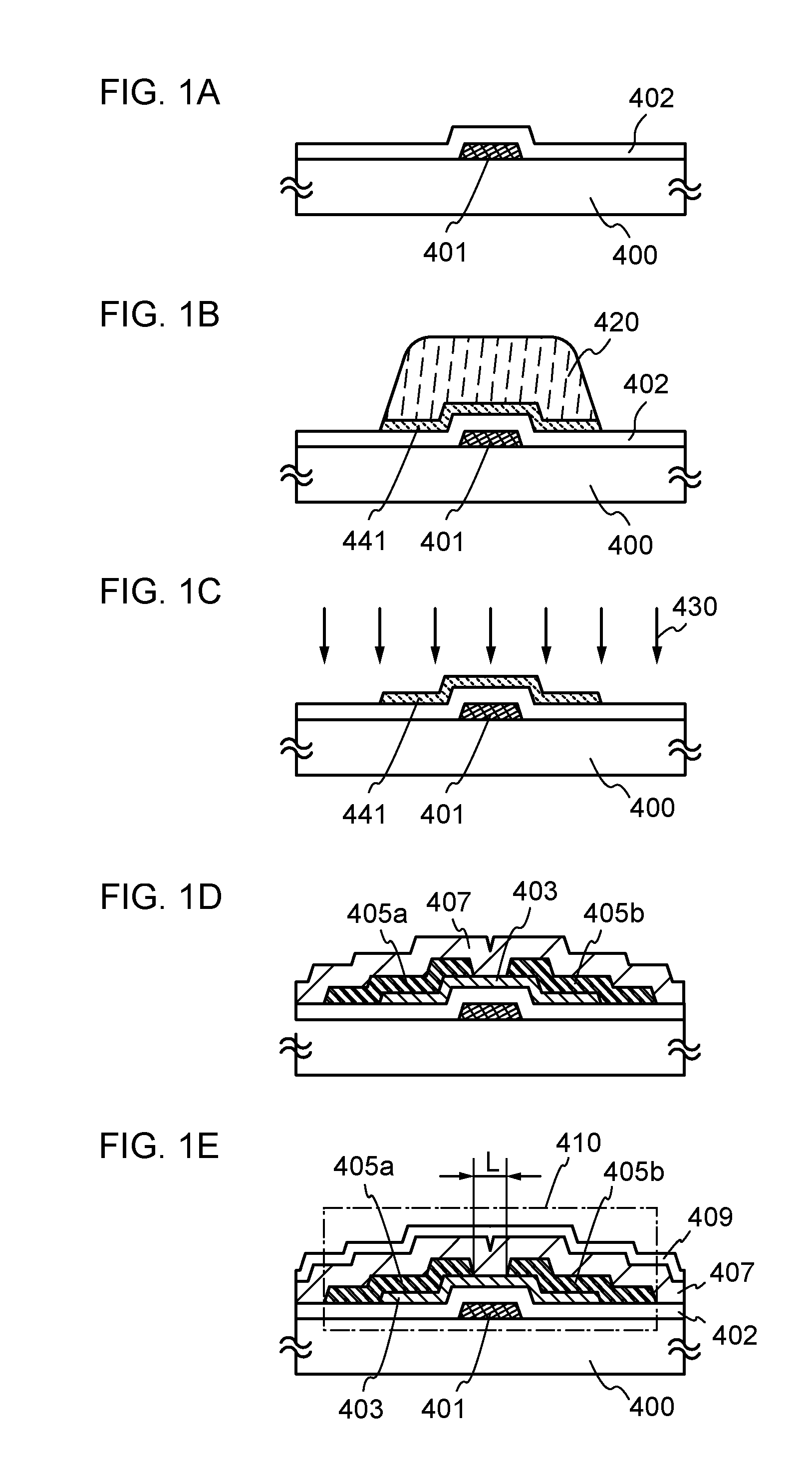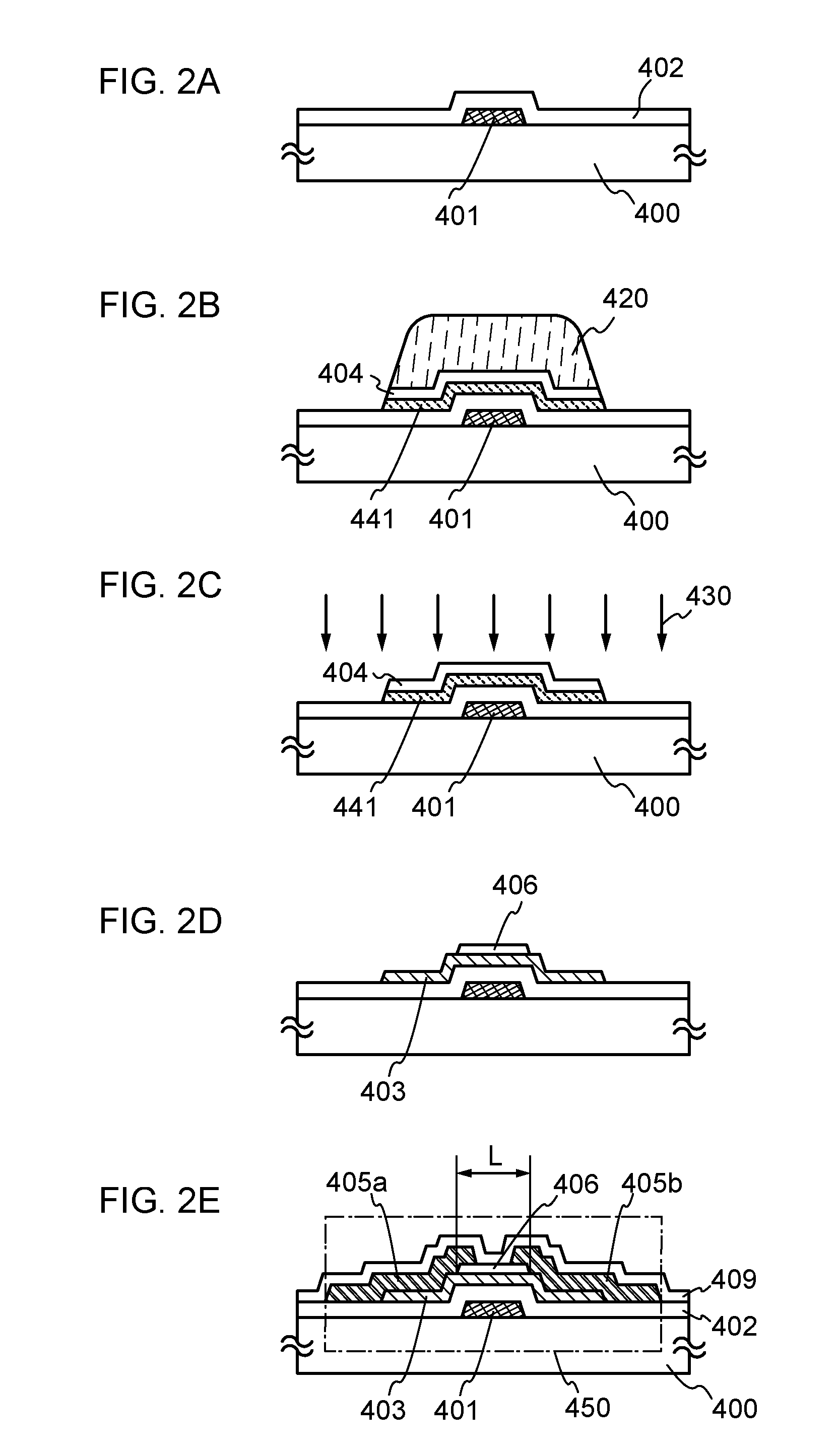Method for manufacturing semiconductor device
- Summary
- Abstract
- Description
- Claims
- Application Information
AI Technical Summary
Benefits of technology
Problems solved by technology
Method used
Image
Examples
embodiment 1
[0065]In this embodiment, an embodiment of a semiconductor device and a method for manufacturing the semiconductor device will be described with reference to FIGS. 1A to 1E and FIG. 5A. In this embodiment, as an example of the semiconductor device, a transistor including an oxide semiconductor for a semiconductor layer in which a channel is formed will be described in detail.
[0066]A transistor 410 illustrated in FIG. 1E includes, over a substrate 400, a gate electrode layer 401, a gate insulating layer 402, an oxide semiconductor layer 403, a source electrode layer 405a, and a drain electrode layer 405b. An insulating layer 407 (also referred to as a first insulating layer) and a protective insulating layer 409 (also referred to as a second insulating layer) are stacked over the transistor 410 in this order. The transistor 410 is one of bottom-gate transistors, and is also one of inverted staggered transistors.
[0067]FIGS. 1A to 1E illustrate an example of a method for manufacturing ...
embodiment 2
[0163]In this embodiment, another embodiment of a semiconductor device and a method for manufacturing the semiconductor device will be described with reference to FIGS. 2A to 2E and FIG. 5B. Note that the same portions or portions having similar functions as in Embodiment 1 can be formed as in Embodiment 1, and the same steps or similar steps as in Embodiment 1 can be performed as in Embodiment 1; therefore, the description is not repeated in this embodiment. In addition, detailed description of the same portions is not repeated, either.
[0164]A transistor 450 illustrated in FIG. 2E includes, over a substrate 400, a gate electrode layer 401, a gate insulating layer 402, an oxide semiconductor layer 403, a channel protective layer 406, a source electrode layer 405a, and a drain electrode layer 405b. A protective insulating layer 409 is formed over the transistor 450. In addition, an insulating layer 407 may be provided as in the transistor 410. The transistor 450 has a kind of bottom-...
embodiment 3
[0198]In this embodiment, another embodiment of a semiconductor device and a method for manufacturing the semiconductor device will be described with reference to FIGS. 3A to 3E and FIG. 5C. Note that the same portions or portions having similar functions as in the above embodiment can be formed as in the above embodiment, and the same steps or similar steps as in the above embodiment can be performed as in the above embodiment; therefore, the description is not repeated in this embodiment. In addition, detailed description of the same portions is not repeated, either.
[0199]A transistor 460 illustrated in FIG. 3E includes, over a substrate 400, a source electrode layer 405a, a drain electrode layer 405b, an oxide semiconductor layer 403, a gate insulating layer 402, and a gate electrode layer 401. A base layer 436 is formed between the substrate 400 and the oxide semiconductor layer 403. A protective insulating layer 409 is provided over the transistor 460. A cap layer 404 is formed...
PUM
 Login to View More
Login to View More Abstract
Description
Claims
Application Information
 Login to View More
Login to View More - R&D
- Intellectual Property
- Life Sciences
- Materials
- Tech Scout
- Unparalleled Data Quality
- Higher Quality Content
- 60% Fewer Hallucinations
Browse by: Latest US Patents, China's latest patents, Technical Efficacy Thesaurus, Application Domain, Technology Topic, Popular Technical Reports.
© 2025 PatSnap. All rights reserved.Legal|Privacy policy|Modern Slavery Act Transparency Statement|Sitemap|About US| Contact US: help@patsnap.com



